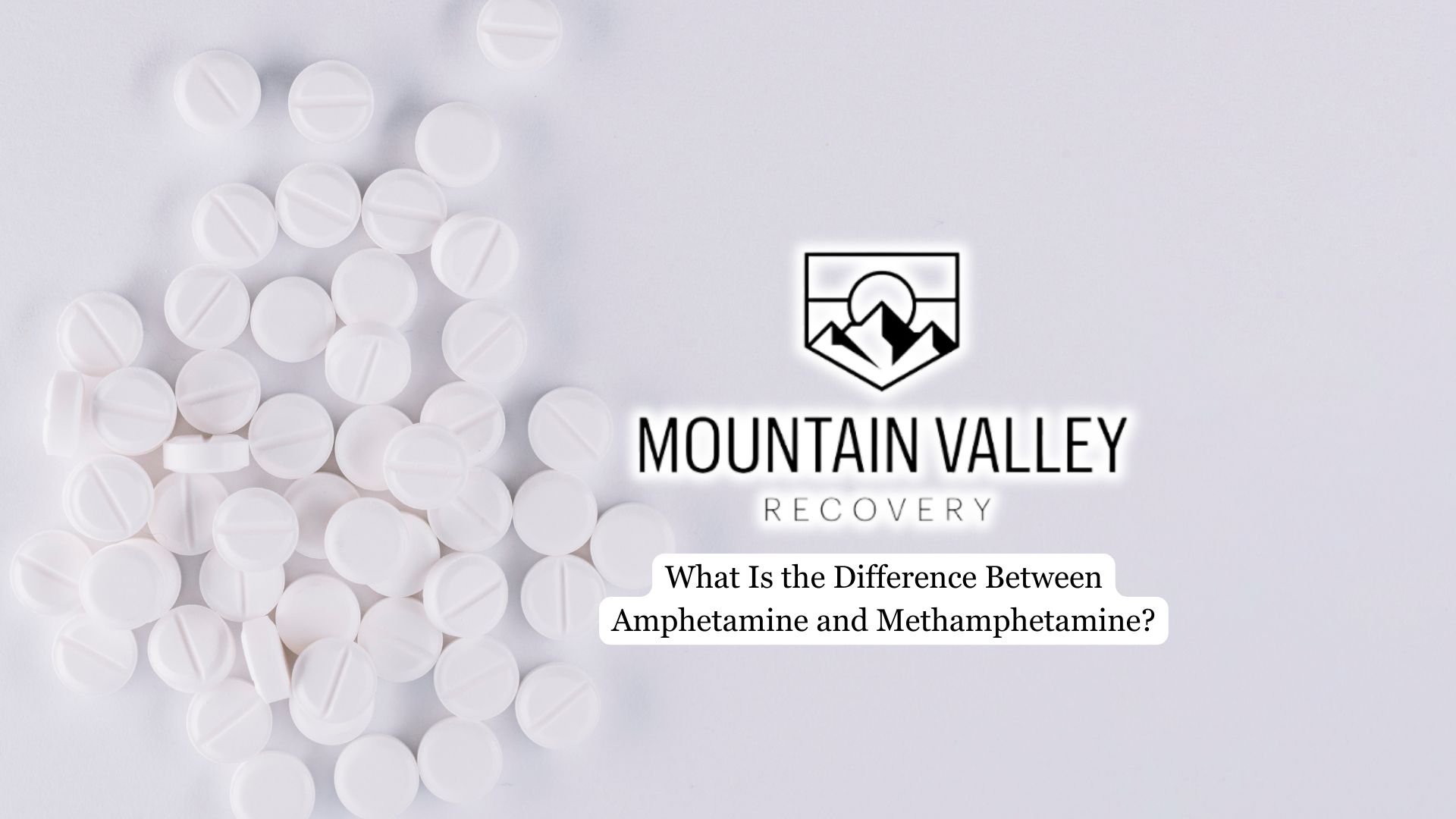Stimulant drugs like amphetamine and methamphetamine play a complex role in both medicine and addiction. For men entering treatment, understanding these substances can provide critical insight into how stimulant use affects the brain, behavior, and long-term health.
This article will discuss what amphetamine and methamphetamine are, how they differ in chemical structure and potency, their effects on neurotransmitter systems, and the health risks they carry.
What are Amphetamine and Methamphetamine
Amphetamine and methamphetamine are both central nervous system stimulants, but their usage, potency, and public perception differ significantly. Amphetamine is primarily used in medical settings to treat conditions like attention-deficit hyperactivity disorder (ADHD) and narcolepsy. It is legally prescribed under names such as Adderall and Dexedrine, offering therapeutic benefits like increased focus and alertness when taken as directed. However, misuse, whether through higher doses or use without a prescription, can lead to dependence. For some men, misuse begins with a legitimate prescription and slowly escalates into a pattern of compulsive use.
Methamphetamine, by contrast, has a much higher potential for abuse and is far more commonly encountered as an illicit substance. Although it has limited medical approval under the name Desoxyn, it is rarely prescribed. Most methamphetamine in circulation is illegally manufactured and sold in crystalline form, often referred to as “crystal meth.” Its effects are fast-acting and intensely euphoric, especially when smoked or injected. This rapid onset and potency create a strong psychological grip, pushing many men into cycles of repeated use and increasing the risk of severe addiction and long-term harm.
If you or a loved one is struggling with amphetamine or methamphetamine use, our Men`s Drug and Alcohol Rehab offers the structure and support needed to recover. Explore our targeted meth addiction treatment, designed to help men break the cycle of addiction and reclaim control of their lives.
Chemical Structure and Potency
At the molecular level, methamphetamine and amphetamine are nearly identical, with one key difference: methamphetamine contains an added methyl group. This seemingly small change makes a big impact. It allows methamphetamine to cross the blood-brain barrier more effectively, amplifying its psychoactive effects.
This increased potency means methamphetamine produces a stronger and longer-lasting high than amphetamine. The intensity of this effect plays a major role in the drug’s high potential for abuse and severe health risks.

Neurotransmitter Release and Effects
Both amphetamine and methamphetamine increase the release of neurotransmitters such as dopamine, norepinephrine, and serotonin. These chemicals influence mood, energy, and focus. However, methamphetamine causes a much larger surge in dopamine, leading to heightened euphoria and a stronger reinforcement of drug-taking behavior.
For men using these drugs, the psychological appeal of increased confidence, alertness, and emotional detachment can be particularly dangerous. Methamphetamine’s more aggressive action on dopamine systems means it more quickly disrupts natural reward circuits, leading to emotional instability, paranoia, and aggression with prolonged use.
Health Risks and Neurotoxicity
Long-term use of either drug can lead to significant health consequences, but methamphetamine is especially damaging. Meth use is associated with severe dental problems (“meth mouth”), skin sores, weight loss, and cardiovascular issues. More critically, methamphetamine causes greater neurotoxicity, damaging brain cells and impairing cognitive function.
Amphetamine misuse also carries risks, including elevated blood pressure, heart problems, and anxiety. However, the damage tends to be less severe than that caused by meth. For men in active addiction, recognizing these differences can guide decisions about treatment urgency and medical care.
Addiction Potential and Withdrawal Symptoms
Both drugs are addictive, but methamphetamine’s faster and more intense high makes it more prone to abuse. The cravings are stronger, and the crash is more severe. Withdrawal from meth can include fatigue, depression, anxiety, and intense drug cravings that may last for weeks.
Amphetamine withdrawal is typically milder but still disruptive. Men may experience mood swings, irritability, and difficulty concentrating. In both cases, withdrawal symptoms can be mentally and physically taxing, making professional support critical during detox.
Comparisons in Medical Use and Misuse
Amphetamines maintain a legitimate role in modern medicine, whereas methamphetamine is overwhelmingly associated with illegal use. This difference affects how each substance is viewed and how addiction is diagnosed and treated. A man abusing prescribed amphetamines may need different intervention strategies than one addicted to street meth.
Understanding these distinctions helps treatment providers develop more effective recovery plans. It also empowers men in recovery to recognize the specific nature of their substance use and engage more fully in their treatment process.
Treatment and Management Options
Effective treatment for amphetamine and methamphetamine addiction involves a combination of behavioral therapy, counseling, and medical support. Cognitive Behavioral Therapy (CBT) is commonly used to address the underlying patterns of thought and behavior that drive stimulant abuse.
In rehab settings, treatment can be tailored to address the psychological and emotional challenges that many men face. This includes managing pressure related to work, societal expectations around masculinity, and the tendency to suppress emotions or avoid asking for help, factors that often contribute to substance use and make recovery more difficult. Recovery plans should also consider the specific stimulant involved, as methamphetamine users may need more intensive support due to its stronger neurological effects.
Final Thoughts from Mountain Valley Recovery
At Mountain Valley Recovery, we provide a structured, male-focused environment where men can overcome stimulant addiction with confidence. Our rehab programs in Utah combine evidence-based therapies, personal accountability, and peer support to address both the physical and psychological aspects of recovery. We understand the unique challenges men face and tailor our approach to meet those needs directly. Whether dealing with amphetamine misuse or methamphetamine addiction, our team is committed to helping each client build a lasting foundation for change.





